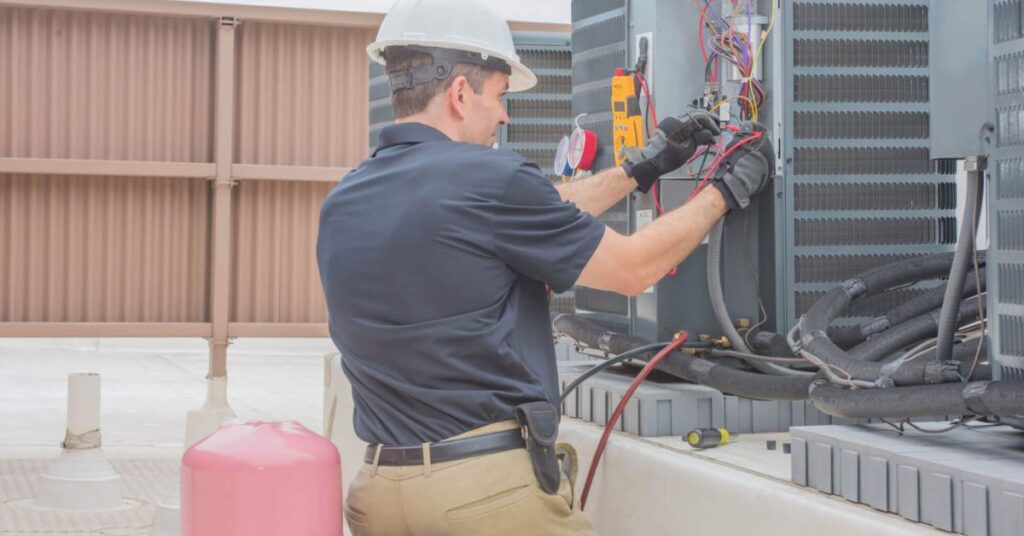When it comes to maintaining a comfortable and energy-efficient home, your HVAC (Heating, Ventilation, and Air Conditioning) system plays a crucial role. However, many homeowners are unsure about how often they should service their HVAC system. Regular maintenance is key to ensuring optimal performance, extending the lifespan of the system, and preventing costly repairs. In this blog post, we’ll delve into how often to service HVAC, the benefits of regular maintenance, and what to expect during a service visit. Let’s get started.
Why Regular HVAC Maintenance is Important
Before discussing the frequency of servicing, it’s essential to understand why regular maintenance is necessary. Here are some key benefits:
Improved Efficiency
Regular servicing ensures that your HVAC system operates at peak efficiency, which can significantly reduce energy bills.
Extended Lifespan
Proper maintenance can extend the life of your HVAC unit, protecting your investment.
Enhanced Air Quality
A well-maintained system helps improve indoor air quality by removing dust, allergens, and other pollutants.
Preventative Care
Regular checks can identify potential issues before they become major problems, saving you from expensive repairs.
Optimal Comfort
Ensuring your HVAC system is in good working order helps maintain a consistent and comfortable indoor environment.
How Often to Service HVAC System
Determining the ideal frequency for servicing your HVAC system is crucial for maintaining its efficiency and longevity. Regular maintenance ensures that your HVAC system runs smoothly, reduces the likelihood of costly repairs, and extends the life of the equipment. Here’s a detailed look at how often different components of your HVAC system should be serviced.
General Guidelines
For most HVAC systems, it’s recommended to schedule professional maintenance at least twice a year. This biannual servicing typically includes spring maintenance and fall maintenance. Spring maintenance focuses on preparing your air conditioning system for the hot summer months, ensuring that it operates efficiently and effectively.
Fall maintenance, on the other hand, is geared towards ensuring your heating system is ready for the cold winter season, providing reliable and efficient heating when you need it most.
Specific Recommendations by System Type
Air conditioners should be serviced annually, preferably in the spring. This preparation helps your air conditioning unit handle the demands of summer, ensuring it operates efficiently and effectively. Heating systems, including furnaces and boilers, should be serviced once a year, typically in the fall.
Annual maintenance before the winter months ensures that your furnace or boiler is in top condition, providing reliable and efficient heating. Since heat pumps are used for both heating and cooling, they require more frequent servicing. It’s best to service heat pumps twice a year – once in the spring for cooling preparation and once in the fall for heating readiness.
Ductless mini-split systems also benefit from biannual servicing due to their year-round operation. Schedule maintenance in the spring and fall to ensure both the heating and cooling components are functioning optimally. While not always considered part of regular HVAC servicing, ductwork should be inspected and cleaned every 3-5 years. This helps maintain good indoor air quality and ensures that your HVAC system operates efficiently.
Additional Considerations
High usage and older systems may require more frequent servicing. If your HVAC system is in constant use or operates in extreme conditions, you might need to service it more frequently. For instance, in regions with extreme temperatures, an additional mid-season check might be beneficial.
Older HVAC systems may require more frequent servicing to keep them running smoothly and to catch potential problems early. Always refer to the manufacturer’s guidelines for specific maintenance intervals. Following these recommendations helps maintain your warranty and ensures the system operates as intended.
DIY Maintenance Between Professional Visits
In addition to professional servicing, you can perform simple maintenance tasks to keep your HVAC system running smoothly between service visits. Replace air filters every 1-3 months, depending on usage and filter type. Clean filters improve airflow and system efficiency. Clear debris, leaves, and dirt from around your outdoor unit to ensure proper airflow.
Check the condition of belts, fans, and other components, looking for signs of wear and tear. Pay attention to your HVAC system’s performance. Unusual noises, inconsistent temperatures, or reduced airflow can indicate the need for servicing.
What Happens During an HVAC Service Visit?
During a typical HVAC maintenance visit, a professional technician will:
- Inspect and Clean: Components such as filters, coils, and ducts will be checked and cleaned. Dirty components can reduce efficiency and air quality.
- Check Refrigerant Levels: For air conditioners and heat pumps, refrigerant levels are checked and adjusted if necessary.
- Lubricate Moving Parts: This helps reduce friction and wear on the system’s components.
- Inspect Electrical Connections: Loose or faulty electrical connections can cause unsafe operation and reduce the lifespan of major components.
- Test Thermostat: Ensuring your thermostat is working correctly is crucial for maintaining comfort and efficiency.
- Check System Controls: The technician will test the starting cycle, operation, and shut-off sequence to ensure everything is functioning correctly.
Read More: How Often To Replace HVAC Filter?
Conclusion
Regular HVAC maintenance is vital for ensuring your system runs efficiently, lasts longer, and maintains indoor air quality. By scheduling professional servicing at least twice a year and performing simple DIY tasks in between, you can enjoy a comfortable and energy-efficient home year-round. Don’t wait for a breakdown to occur – proactive maintenance is the key to a healthy HVAC system.

